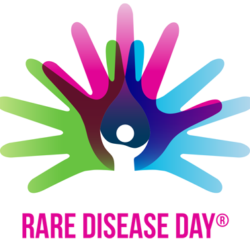Rare Disease Day Spotlights Need for Research
February 28, 2017
Rare Disease Day brings international attention to the plight of patients who struggle with ALS, Gaucher disease, cystic fibrosis and other less common conditions. This year’s theme is research, a challenge for any disease state but especially for conditions with small patient populations.

As Emily Walsh of the Mesothelioma Cancer Alliance explained, “Even though rare diseases are more common than one would think, affecting 1 in 10 Americans, they are dismally lacking in available treatments. Only 5% of rare diseases have an FDA-approved treatment or cure.” A rare disease is defined in the United States as any condition that affects fewer than 200,000 people.
Part of this challenge may stem from the difficulty of enrolling patients in clinical trials for new treatments. As Andrew Spiegel of the Coalition for Clinical Trials Awareness noted, “Research tells us that more than a third of clinical trial sites don’t meet their enrollment goals, and 11 percent can’t enroll even one patient.” The coalition advocates for a federally sponsored public awareness campaign to educate Americans on the value of clinical trials participation.
Funding presents another barrier. As the National Institutes of Health explain, “Medical research funding is essential for developing new…treatments for rare diseases, but it can be difficult to learn about funding opportunities.” Aside from finding funding sources, researchers must also compete for limited funds among a wide and complex range of disease states.
Finally, rare disease patients sometimes discover that, even when research does yield breakthrough treatments, access barriers stand in their way. Just take cystic fibrosis, a disease that causes mucus to cover the lungs, making it difficult to breathe. The Food and Drug Administration approved a new therapy in 2015 that treated certain patients by addressing their specific genetic mutations – not just their disease symptoms.
Yet the drug’s cost has led some state Medicaid programs to impede access by requiring extensive pre-approval processes. A 2016 report revealed that only 42 percent of the cystic fibrosis patients who met FDA’s criteria actually received the treatment.
Thus, fulfilling the goals of Rare Disease Day requires a multi-prong solution – improved research funding, more robust clinical trials participation and access for patients when treatment options finally do materialize.
Tags: Cystic Fibrosis, Neurological, Pain, Prior Authorization, Rare DiseaseCategorized in: Blog

